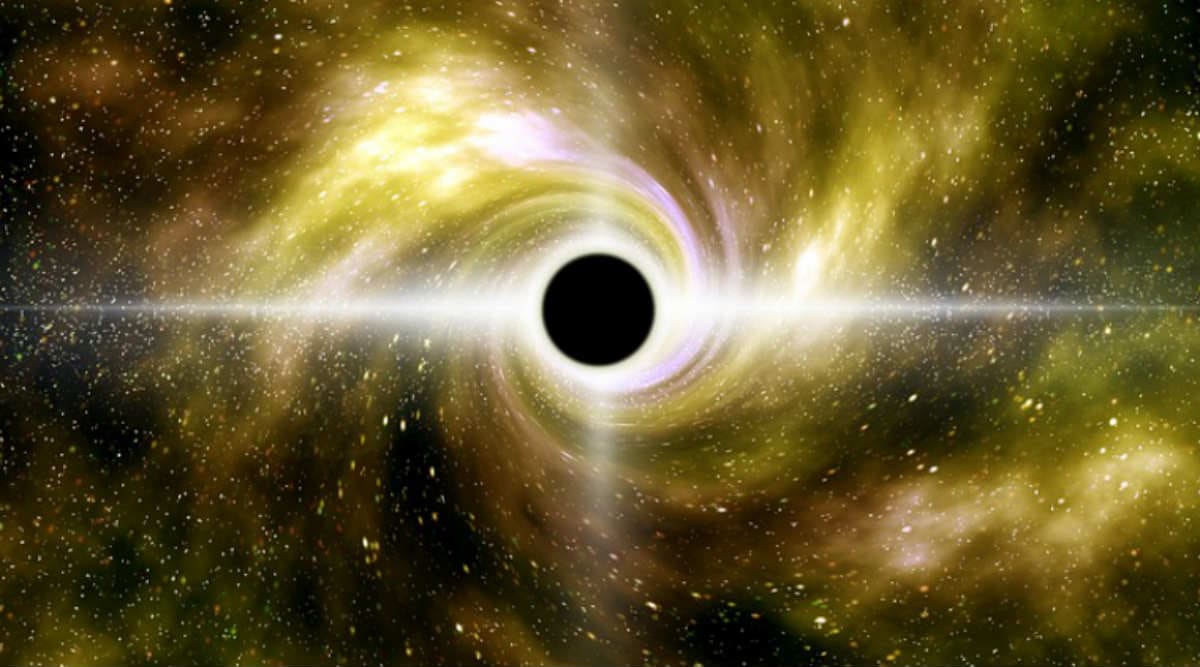
[ad_1]
 A stellar blackhole weighs upto a hundred times that of our Sun whereas a supermasisve blackhole can have a mass of over one million times of the solar mass.
A stellar blackhole weighs upto a hundred times that of our Sun whereas a supermasisve blackhole can have a mass of over one million times of the solar mass.
A team of international gravitational wave astronomers have detected a massive and most distant black hole collision ever recorded till date. This is the first time that a collision leading to the formation of a black hole which weighs 142 times that of the Sun has been discovered by collaborators of Laser Interferometer Gravitational wave Observatory (LIGO) and VIRGO.
India is building the third of the LIGO observatories at Hingoli in Maharashtra.
A gravitational wave signal lasting 0.1 second emanated when black holes weighing 85 times and 66 times the solar mass, respectively, collided in a binary system. This newly formed black hole – GW190521, then sent out a gravitational wave which travelled a distance of 17.2 billion light years to be captured by detectors LIGO and Virgo on May 21, 2019.
Black holes, formed when massive stars collapse and die, is an invisible space located in the centre of the galaxy. It is packed with huge amounts of matter fused into a relatively small space. So far, two types of black holes — stellar and supermassive black holes have been discovered. A stellar blackhole weighs upto a hundred times that of our Sun whereas a supermasisve blackhole can have a mass of over one million times of the solar mass.
Theoretically, the black holes with mass ranging between 100 to 1 lakh solar mass are termed as Intermediate Mass Black holes. This discovery gives the first direct observation of such black holes in the gravitational wave window.
“ Black holes with masses ranging between 65 – 120 solar mass cannot be formed by a collapsing star as massive stars are highly unstable. However, an 85 solar mass black hole in this binary system suggests a newer possibility of black hole formation. For example, black holes merged by several collisions of smaller black holes in a globular cluster or galactic center,” said Prof. Archana Pai from IIT-Bombay, one of the leading scientists involved in the discovery published in the Physical Review Letters and the Astrophysical Journal Letters on Wednesday.
What adds to the significance of this extraordinary pair of stellar mass merger, is the fact that the collision is the farthest detected.
The first LIGO detected gravitational waves of 2016 emerged from black hole collision that happened at a distance of 1.6 billion light years away. Whereas, in this case, signals have travelled from 17.2 billion light years away.
“The detectors captured signals even in the low frequency range, essentially allowing scientists to travel further back into history of the formation of the universe. This has been possible mainly due to the enhanced sensitivity of the gravitational wave detectors LIGO and VIRGO,” said Sanjit Mitra, senior scientist at Inter University Centre for Astronomy and Astrophysics (IUCAA), Pune.
Indian Institute of Science, Education and Research (IISER),Pune and Kolkata, Chennai Mathematical Institute, Directorate of Construction, Services and Estate Management and Tata Institute of Fundamental Research (TIFR), Mumbai ; IIT Madras, Gandhinagar and Hyderabad, Institute of Plasma Research, Chandigarh ; Saha Institute of Nuclear Physics, Kolkata and Raja Ramanna Centre for Advanced Technologies, Indore.
Scientists are hopeful about more discoveries of such intermediary black holes in the coming years using LIGO-India, which will add to the overall sensitivity of the detector.
📣 The Indian Express is now on Telegram. Click here to join our channel (@indianexpress) and stay updated with the latest headlines
For all the latest Technology News, download Indian Express App.
© The Indian Express (P) Ltd
[ad_2]
Source link